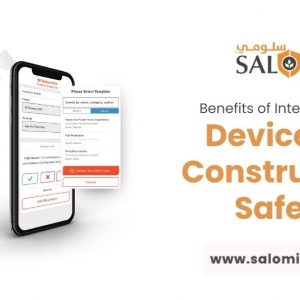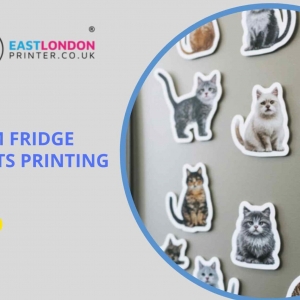Introduction to Custom Foam Inserts
In today’s competitive market, protecting products during storage, handling, and transportation is more important than ever. Whether you’re shipping delicate electronics, precision medical tools, or heavy industrial equipment, ensuring safe arrival builds trust and reduces costs. This is where custom foam inserts step in.
Custom foam inserts are protective cutouts designed to fit specific products. Unlike generic packaging, these inserts offer a tailored solution that keeps items snug, secure, and visually appealing. They cushion against impacts, prevent scratches, and reduce product movement during transit. Beyond safety, they also contribute to brand image by elevating the unboxing experience.
From small e-commerce brands to large-scale manufacturers, businesses across industries are embracing custom foam solutions. In this guide, we’ll explore materials, design processes, applications, benefits, mistakes to avoid, and future trends in foam inserts—helping you make informed decisions for product protection and packaging excellence.
Why Custom Foam Inserts Matter in Modern Packaging
Modern packaging isn’t just about protecting products—it’s about creating memorable experiences while ensuring safety. Custom foam inserts play a crucial role in:
- Minimizing Product Damage – Foam absorbs shocks, vibrations, and compression.
- Enhancing Presentation – Well-designed inserts make products look premium.
- Improving Customer Satisfaction – Fewer damages mean happier customers and reduced returns.
- Supporting Branding – Inserts can be cut, colored, and printed to reflect brand identity.
- Optimizing Space – Inserts are designed for efficient use of packaging space.
In sectors like electronics and luxury goods, packaging is part of the brand story. Foam inserts bridge functionality with aesthetics, making them indispensable in today’s market.
Types of Foam Materials Used in Custom Inserts
Choosing the right material is key to performance. Different foams suit different needs:
Polyurethane (PU) Foam
- Lightweight and flexible
- Provides cushioning for fragile goods
- Ideal for electronics and small gadgets
Polyethylene (PE) Foam
- Rigid and durable
- Resistant to chemicals and moisture
- Best for industrial tools and heavy items
EVA Foam
- Offers a balance of durability and aesthetics
- Premium look with reliable shock absorption
- Common in retail displays and luxury packaging
Specialty Foams
- Anti-static foam for sensitive electronics
- Medical-grade foam for surgical instruments
- Eco-friendly foams for sustainable packaging
Selecting the right foam depends on weight, fragility, and industry requirements.
The Science Behind Foam Density and Durability
Foam performance is largely determined by density—measured in pounds per cubic foot (PCF).
- Low-density foam (1–2 PCF): Soft, lightweight, suitable for cushioning delicate items.
- Medium-density foam (2–4 PCF): Versatile, balances softness with resilience.
- High-density foam (4+ PCF): Durable, ideal for heavy-duty applications.
Durability also depends on compression resistance, resilience, and environmental conditions. For example, closed-cell foams (like PE) resist moisture and chemicals, making them suitable for industrial use, while open-cell foams (like PU) excel at cushioning but are less water-resistant.
Understanding these properties ensures inserts perform optimally for years, even in tough environments.
Design Process of Custom Foam Inserts
Creating custom foam inserts in USA involves several steps:
Initial Assessment and Requirements
- Product dimensions and fragility are evaluated.
- Packaging goals (protection, branding, storage) are defined.
Foam Cutting Techniques
- Die-cutting: For simple, large-scale designs.
- Waterjet cutting: Precise, suitable for intricate shapes.
- Laser cutting: High detail, often for branding and aesthetics.
- CNC routing: Best for complex, multi-layer designs.
Prototyping and Testing
- Foam samples are created and tested for fit.
- Shock, vibration, and drop tests validate performance.
- Adjustments ensure perfect alignment with product needs.
A well-executed design process ensures inserts deliver both function and form.
Applications of Custom Foam Inserts Across Industries
Electronics and Tech
Protects gadgets, laptops, drones, and cameras from shocks and scratches.
Medical and Healthcare
Safeguards surgical instruments, implants, and diagnostic tools.
Tools and Industrial Equipment
Keeps tools organized, secure, and damage-free in transport.
Luxury Goods and Retail Packaging
Enhances unboxing with premium foam for jewelry, watches, and cosmetics.
Aerospace, Automotive, and Defense
Ensures critical components and equipment remain safe under extreme conditions.
Custom foam inserts adapt across industries, proving their versatility and reliability.
Benefits of Using Custom Foam Inserts
Protection and Safety
Foam minimizes risks of breakage, scratches, and moisture damage.
Branding and Aesthetics
Color-matched foams, logo cutouts, and sleek finishes enhance product presentation.
Cost-Efficiency
Reduces returns, product loss, and shipping costs with optimized packaging.
Mistakes to Avoid When Choosing Custom Foam Inserts
- Choosing the wrong foam density – leads to insufficient protection.
- Ignoring environmental factors – moisture and temperature can affect foam.
- Overlooking aesthetics – packaging should reflect brand quality.
- Skipping prototype testing – leads to poor fit and wasted costs.
Avoiding these mistakes saves money and ensures long-term efficiency.
Environmental Impact and Sustainable Alternatives
Packaging waste is a growing concern. Many manufacturers now offer:
- Recyclable foams – designed for easy reuse.
- Biodegradable foams – eco-friendly alternatives.
- Reusable inserts – durable enough for long-term applications.
Businesses adopting green packaging appeal to eco-conscious customers and align with sustainability goals.
Future Trends in Foam Insert Technology
Looking ahead, innovations include:
- 3D-printed foam inserts – highly customized and fast to produce.
- Smart foams – with shock sensors for monitoring product handling.
- Sustainable materials – biodegradable and compostable solutions.
- Automation in design – AI-driven software for rapid customization.
These advancements promise better efficiency, eco-friendliness, and product protection.
FAQs on Custom Foam Inserts
Q1: What industries benefit most from custom foam inserts?
Electronics, medical, industrial tools, luxury retail, aerospace, and automotive.
Q2: Are custom foam inserts expensive?
Not necessarily—cost depends on foam type and design, but savings from reduced damage often outweigh expenses.
Q3: Can foam inserts be branded with logos or colors?
Yes, foam can be cut, printed, or dyed to match brand identity.
Q4: Are there eco-friendly foam insert options?
Yes, recyclable and biodegradable foams are now widely available.
Q5: How long do custom foam inserts last?
With proper care, inserts can last years, depending on material and usage.
Q6: What’s the difference between PU and PE foam?
PU is soft and cushioning, while PE is rigid, durable, and moisture-resistant.
Conclusion
Custom foam inserts are no longer optional—they’re essential. By combining protection, branding, cost savings, and sustainability, they address the needs of modern industries and consumers alike. With advancing technologies and eco-friendly options, foam inserts are set to become even more versatile in the years ahead.
Whether you’re packaging sensitive electronics, luxury goods, or heavy machinery, investing in custom foam inserts ensures safety, professionalism, and long-term reliability.










